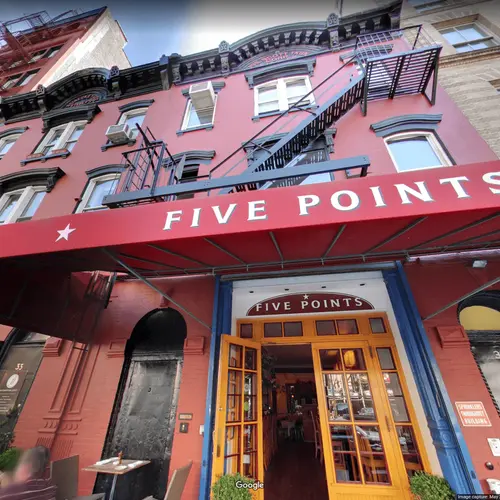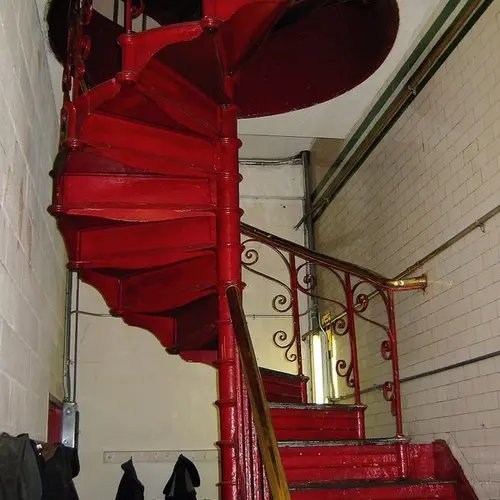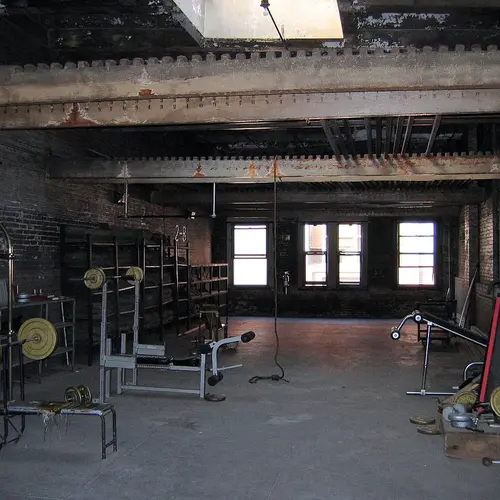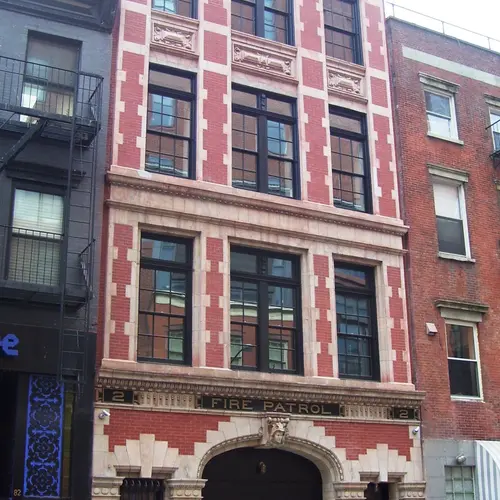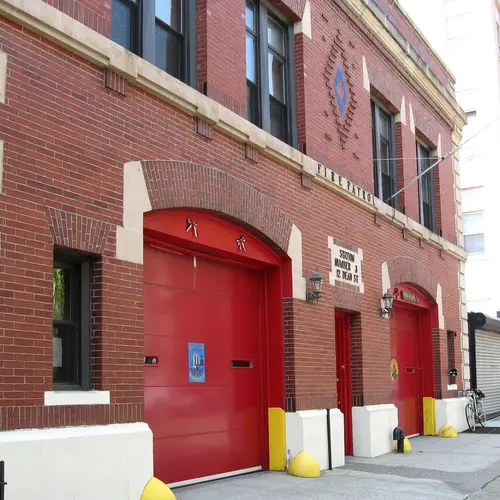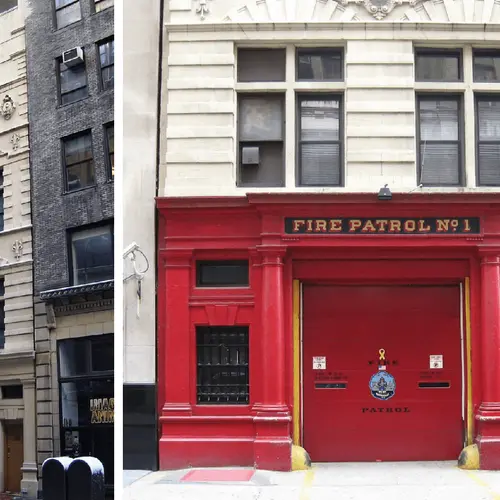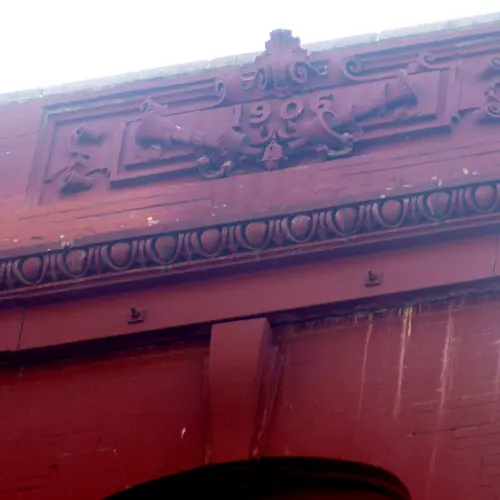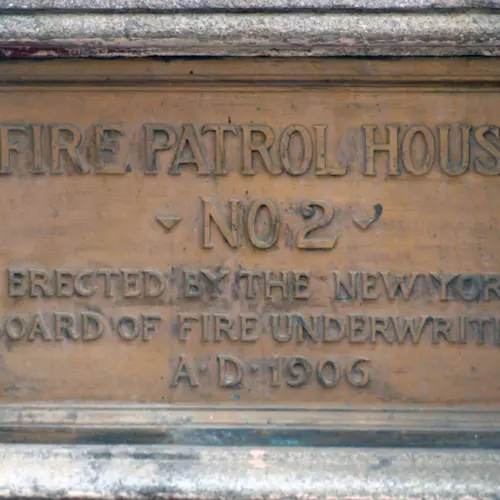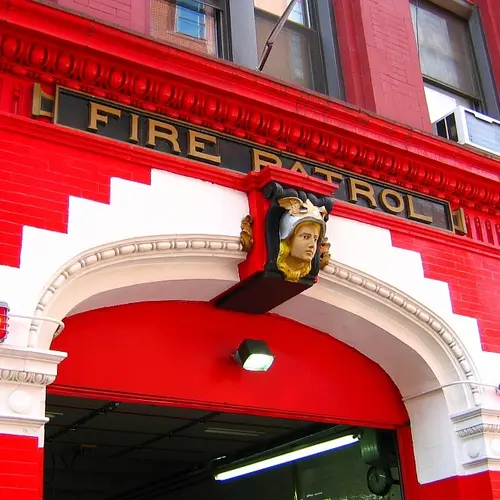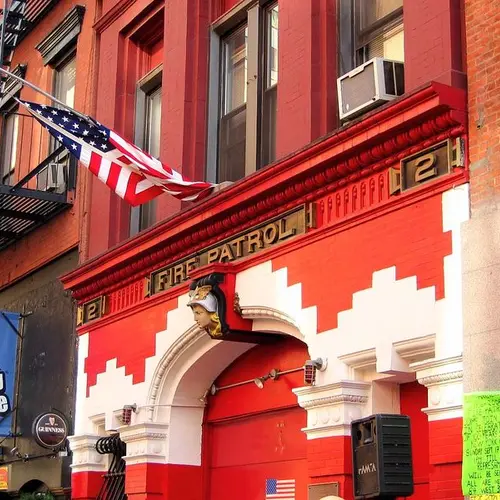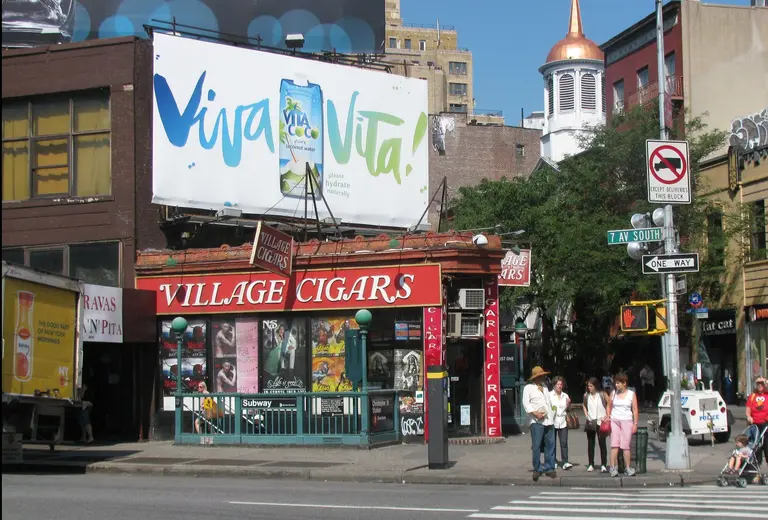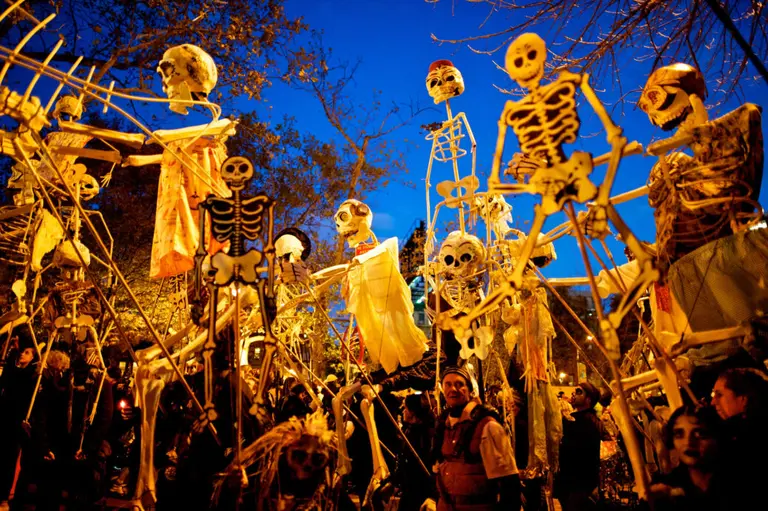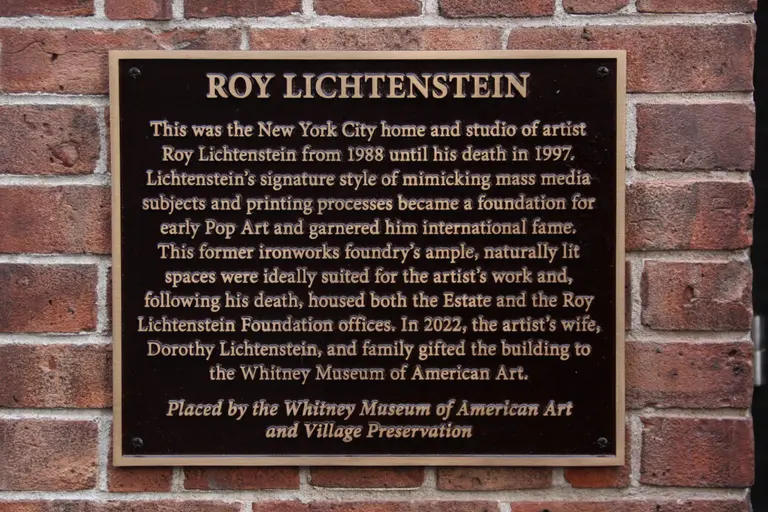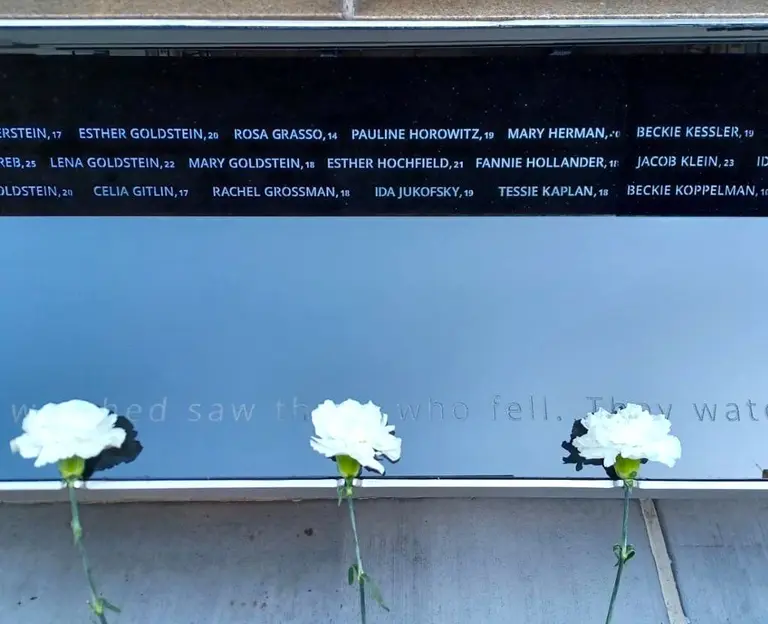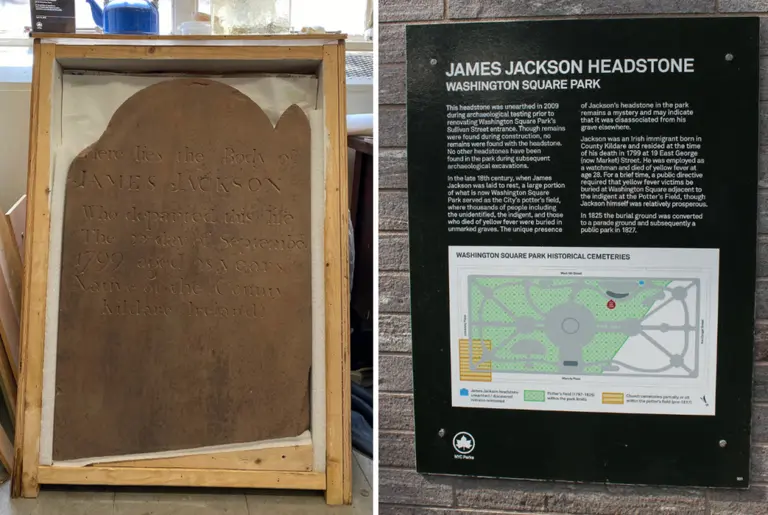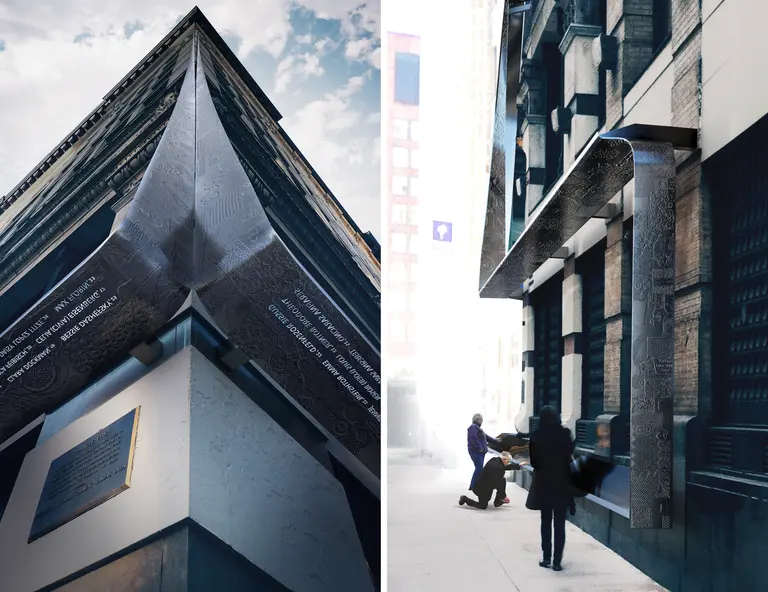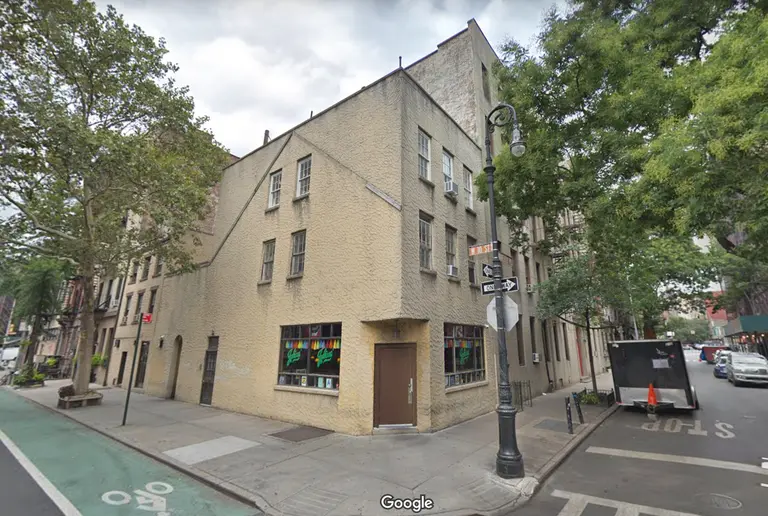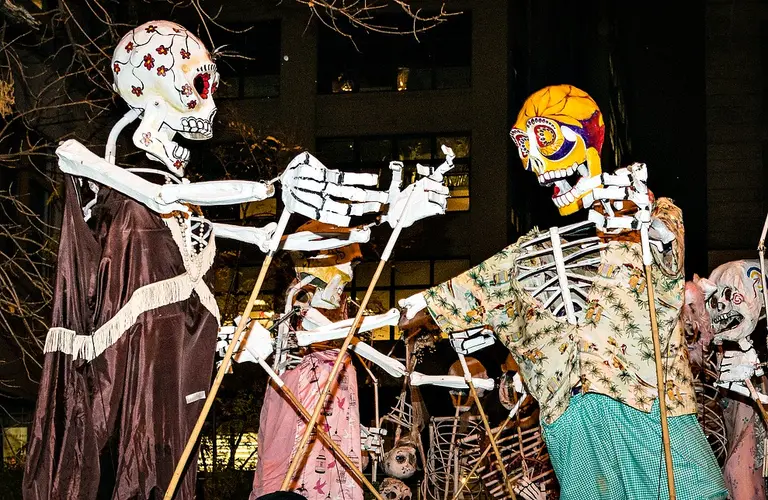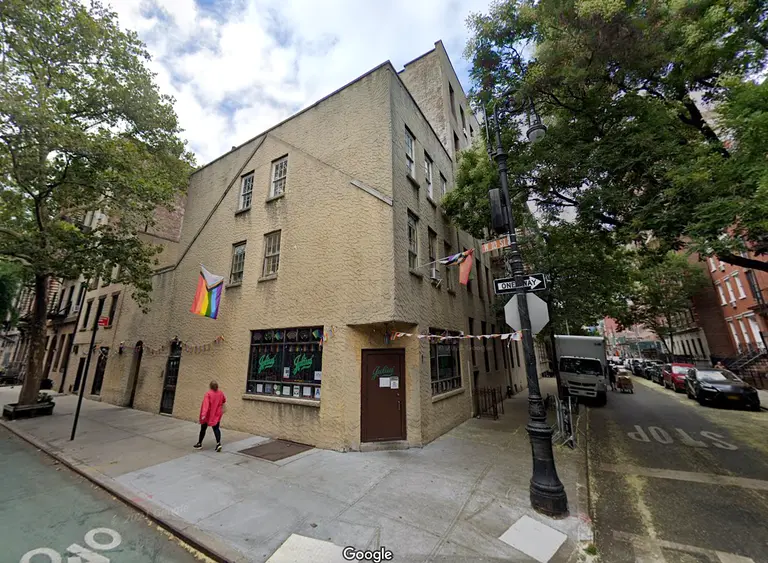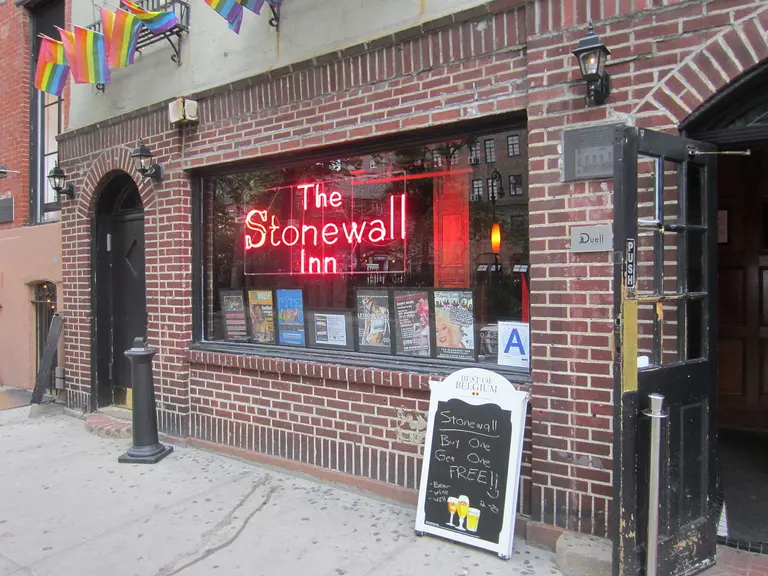Fire Patrol House #2: From Benjamin Franklin’s fire prevention ideas to Anderson Cooper’s stylish home
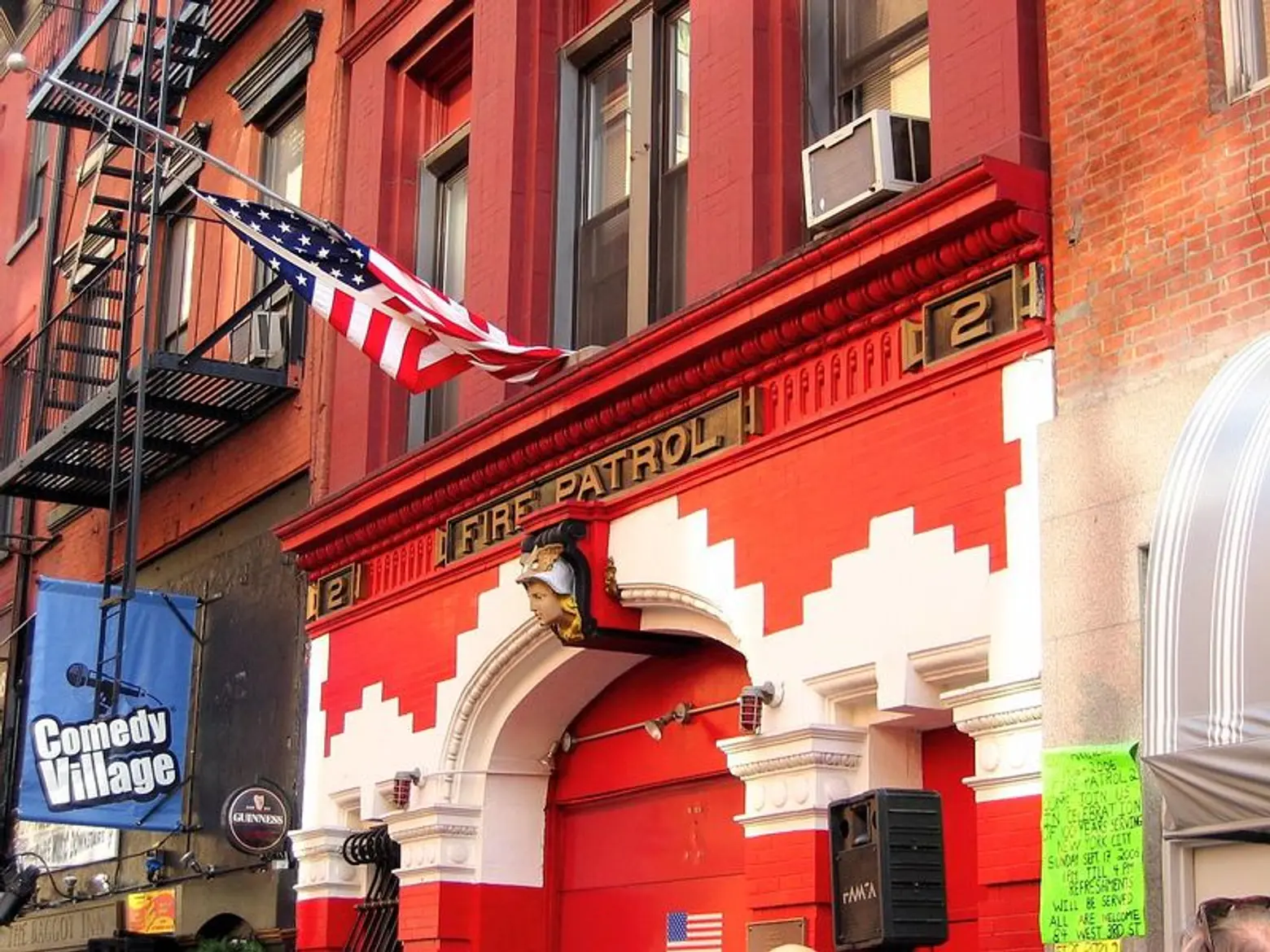
Fire Patrol #2 in 2009, via Greenwich Village Society for Historic Preservation Image Archive
The former firehouse located at 84 West 3rd Street in Greenwich Village is often noted for being the renovated and restored home of TV personality and journalist Anderson Cooper. But it’s just as noteworthy for an unusual history connected to Benjamin Franklin and insurance underwriters, and for not being the kind of firehouse you think it is at all.
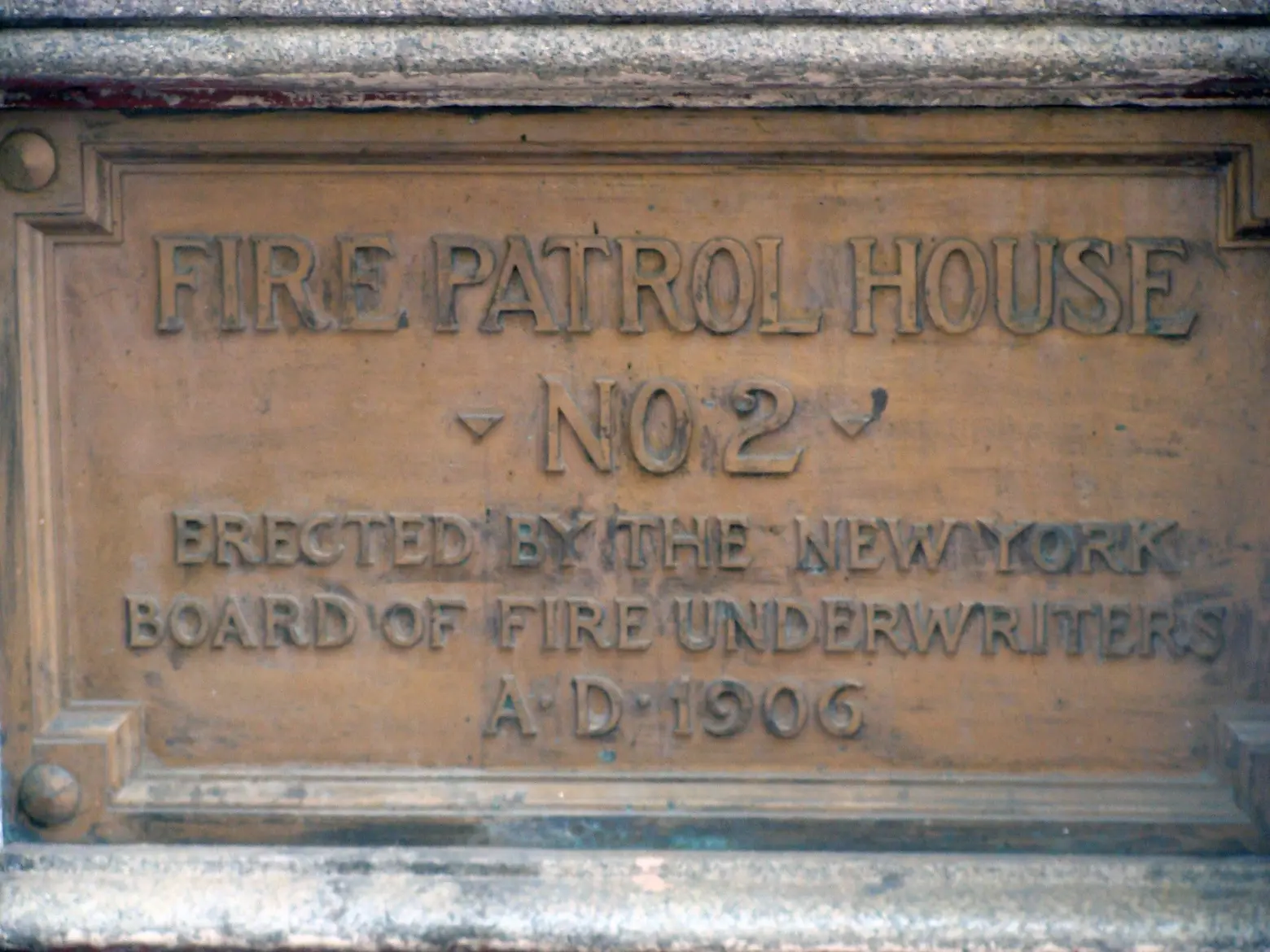 Via Greenwich Village Society for Historic Preservation Image Archive
Via Greenwich Village Society for Historic Preservation Image Archive
The Fire Patrol House #2 building was constructed in 1906 by architect Franklin Baylis. But this Fire Patrol House was not operated by the New York City Fire Department. It was operated by something called the New York Board of Fire Underwriters, which pre-dates and had a rather different mission from the FDNY.
We may take for granted today the notion that it is government’s responsibility to protect the public from fires, especially in densely-populated urban areas. But this is a relatively modern concept. While volunteer firefighting existed from the earliest days of New York, a municipally-operated, paid professional firefighting force was not formed until 1865. But more than a half-century earlier the New York Board of Fire Underwriters formed its “fire patrols,” intended to protect property in case of fire.
The concept of insurance company-run fire patrols goes back to Benjamin Franklin. After witnessing two major fires while growing up in Boston, he later advocated for organized fire protection in cities. These kinds of forces soon became common in major American cities in the 19th and into the 20th century, though New York’s was one of the first, if not the very first.
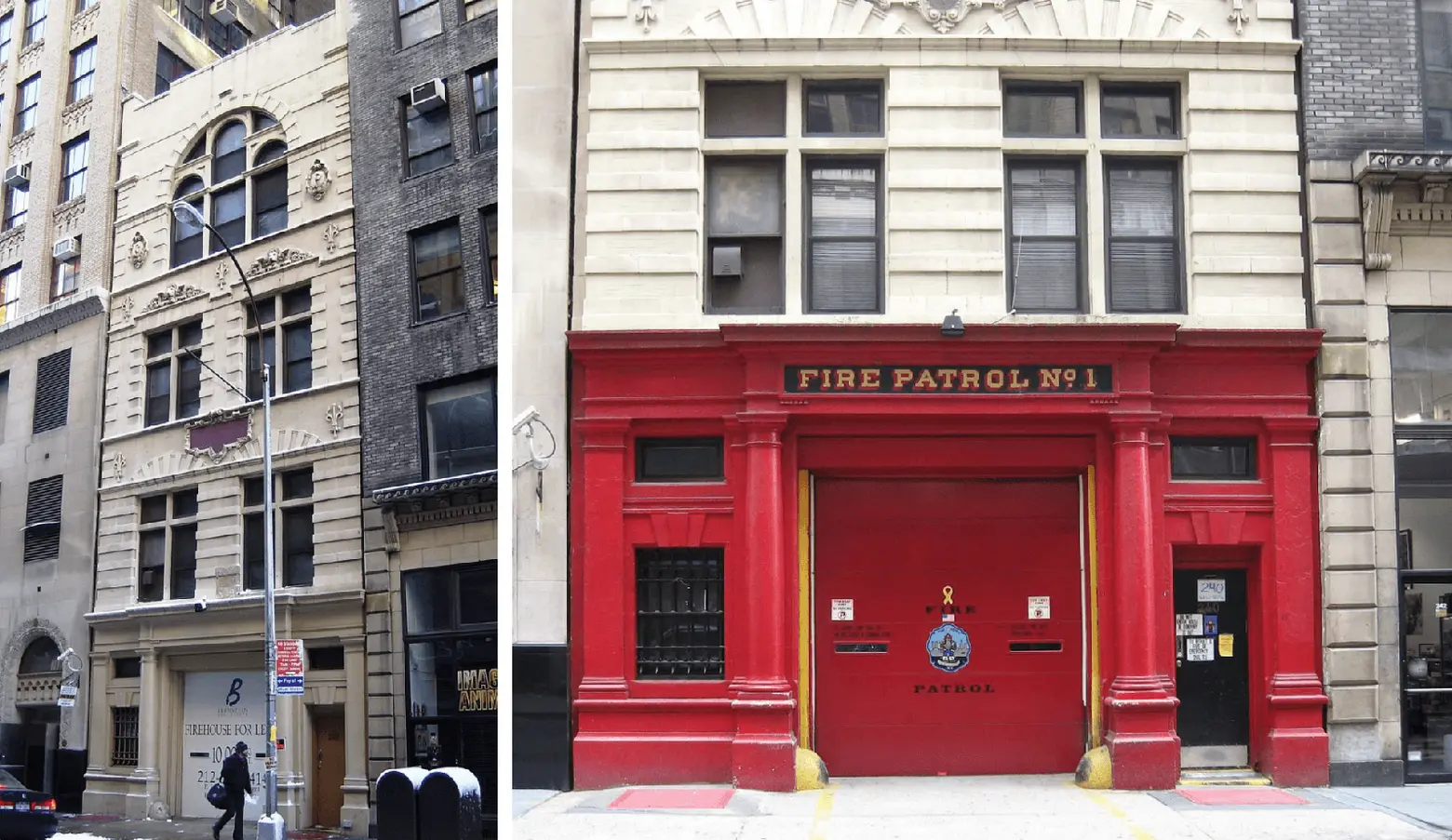 Fire Patrol #1 today, via Wiki Commons (L) and pre-conversion in 2008 via Wiki Commons (R)
Fire Patrol #1 today, via Wiki Commons (L) and pre-conversion in 2008 via Wiki Commons (R)
 Fire Patrol #3, via Wiki Commons
Fire Patrol #3, via Wiki Commons
Also unique among these private fire patrol systems, New York’s actually survived into the 21st century, albeit just barely. Until 2006, the New York Board of Fire Underwriters continued to operate three fire patrols in New York City – Fire Patrol #2 at 84 West 3rd Street in Greenwich Village, Fire Patrol #1 at 240 West 30th Street in Chelsea, and Fire Patrol #3 at 12 Dean Street in Downtown Brooklyn.
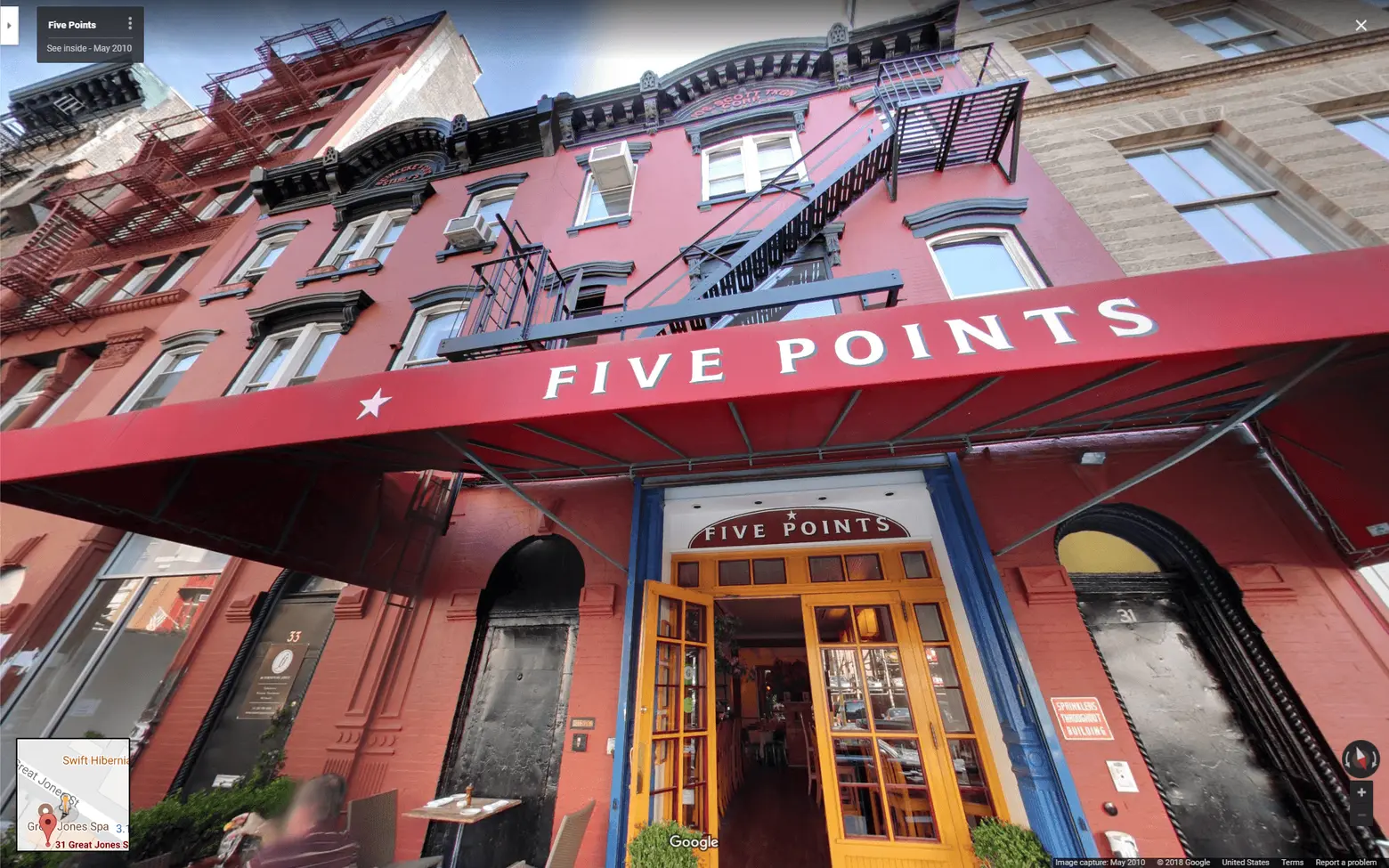 Google Street View of 31 Great Jones Street
Google Street View of 31 Great Jones Street
The West 3rd Street Fire Patrol was actually previously located in a building that still stands at 31 Great Jones Street, which was built in 1871 for this purpose. But by the early 20th century a new, more modern firehouse was needed, and the New York Board of Fire Underwriters chose this site in what was then a rough-and-tumble immigrant neighborhood on a site under the Sixth Avenue Elevated railway (ever-conscious of property values, the Fire Underwriters may have purposely chosen low-rent locations for their fire patrol houses, as Fire Patrol #1 was located in what was then the heart of New York’s high-crime “Tenderloin” District).
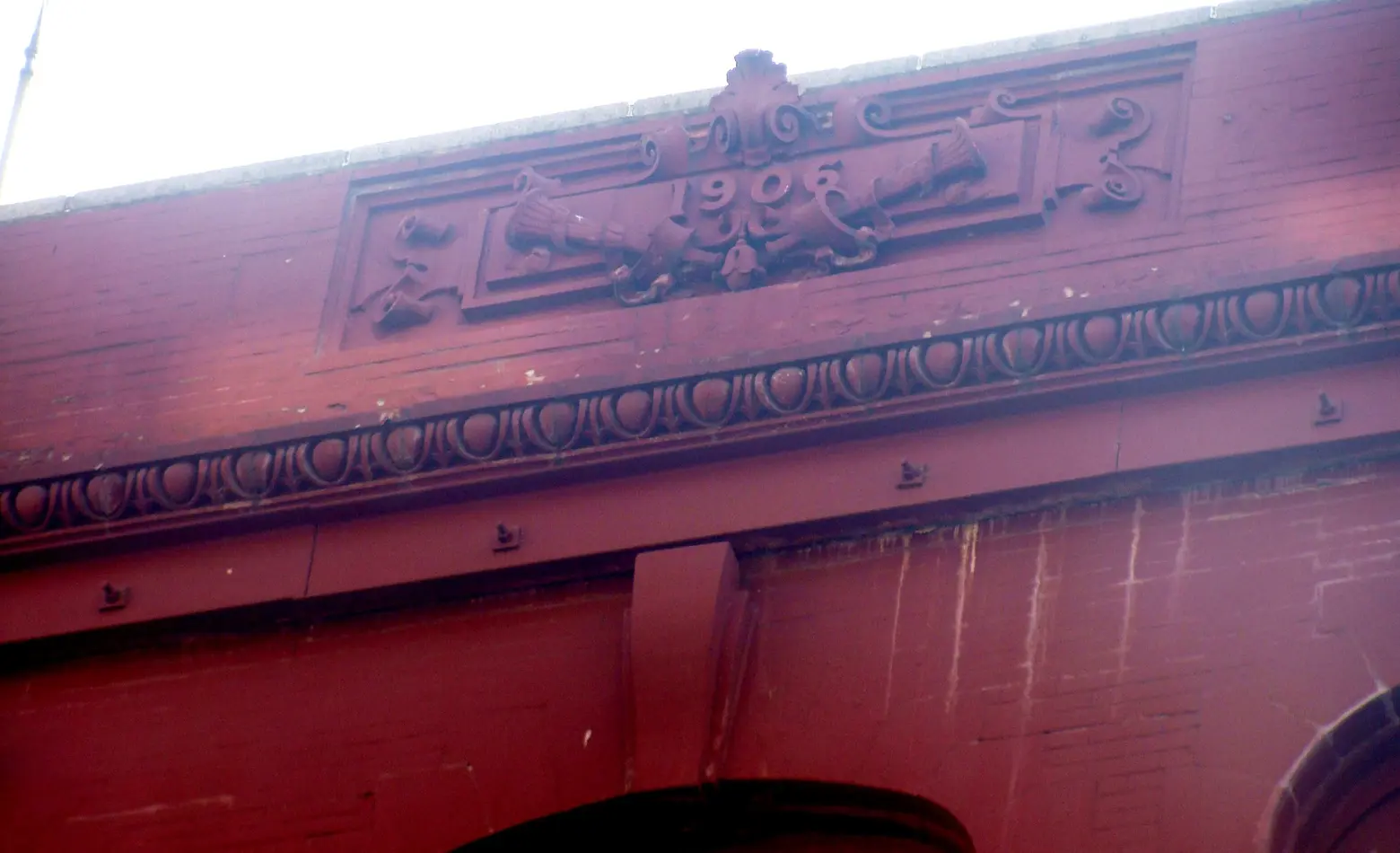
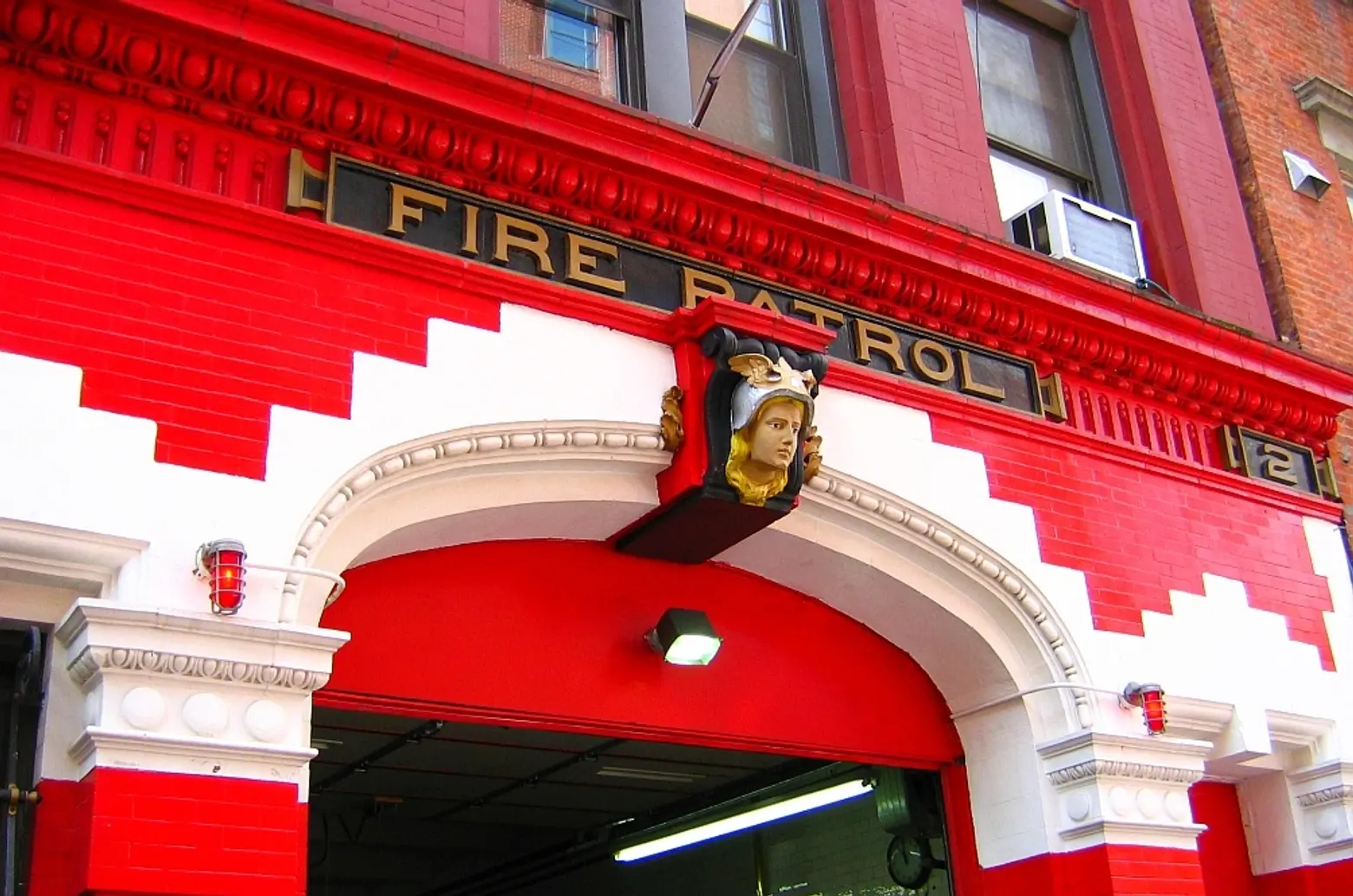 Photos of Fire Patrol #2 in 2009, prior to its renovation, via Greenwich Village Society for Historic Preservation Image Archive
Photos of Fire Patrol #2 in 2009, prior to its renovation, via Greenwich Village Society for Historic Preservation Image Archive
The Beaux Arts-style building has flourishes that include fireman’s trumpets supporting an entablature that says “1906” in the cornice, as well as a head of Mercury symbolizing speed over what had been the fire patrol entrance. For these and other reasons, Fire Patrol members were frequently confused with FDNY firefighters. They also had similar uniforms, operated similar equipment, and often worked in tandem at fires. But while the FDNY was primarily charged with saving lives and extinguishing fires, the Fire Patrol’s primary function was to protect properties from fire or water damage.
But the line between the two blurred further on September 11, 2001. Members of Fire Patrol #2 responded to the attacks upon the World Trade Center along with FDNY members, this time to help save lives rather than protect property. Keith Roma of Fire Patrol #2 perished at the World Trade Center on September 11th.
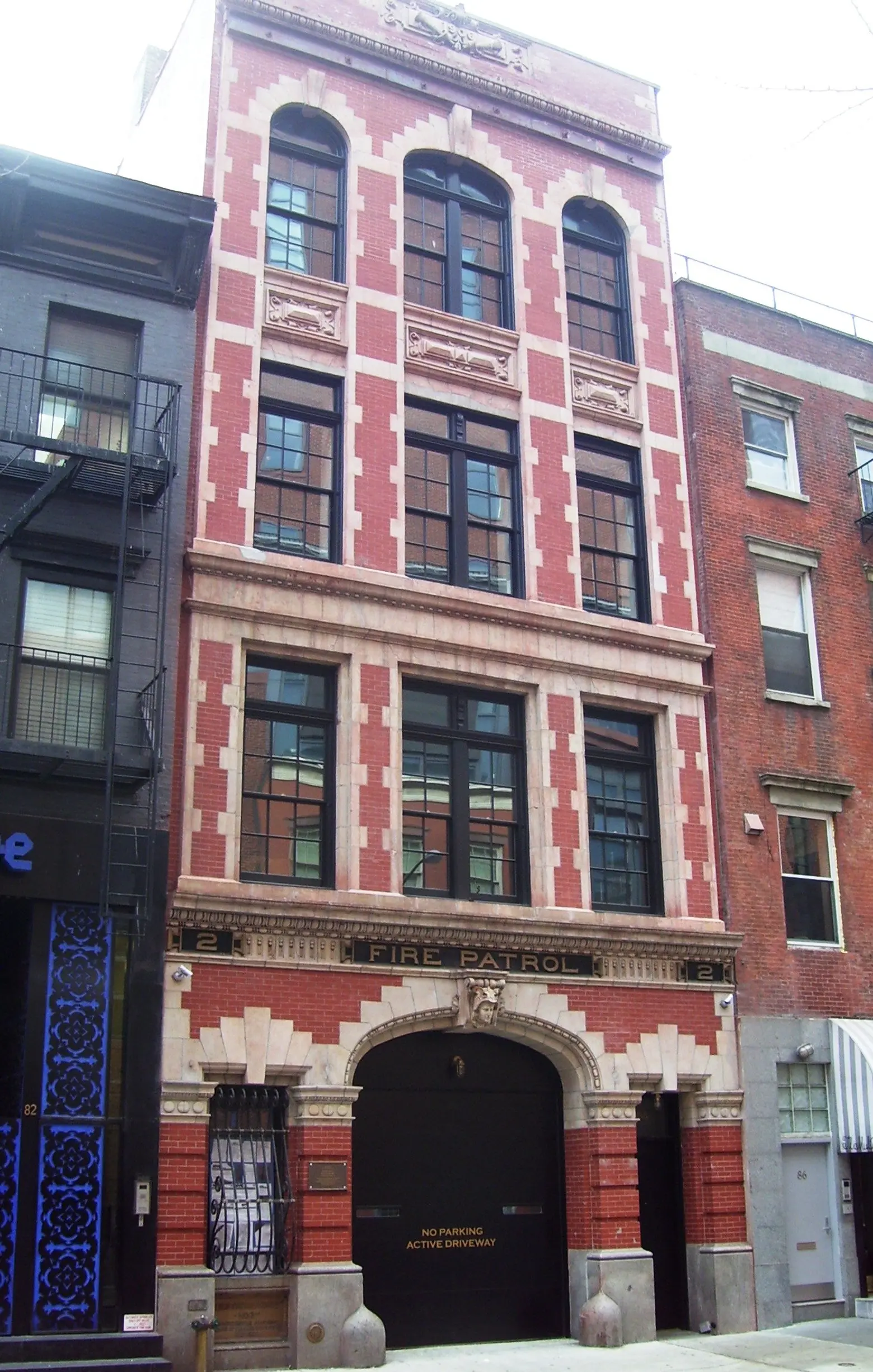 Fire Patrol #2 in 2011, after Anderson Cooper’s renovation, via Wiki Commons
Fire Patrol #2 in 2011, after Anderson Cooper’s renovation, via Wiki Commons
Unfortunately, not long after that tragic event, the New York Board of Fire Underwriters decided to end the fire patrol and sell off these properties, each located in increasingly valuable parts of the city. The Greenwich Village Society for Historic Preservation was concerned that the building might be demolished if purchased for development, and in 2010 secured a determination of eligibility for the patrol house to be listed on the National Register of Historic Places, offering tax incentives for preserving the building, and in 2013 secured landmark status for the building and its surroundings as part of the South Village Historic District.
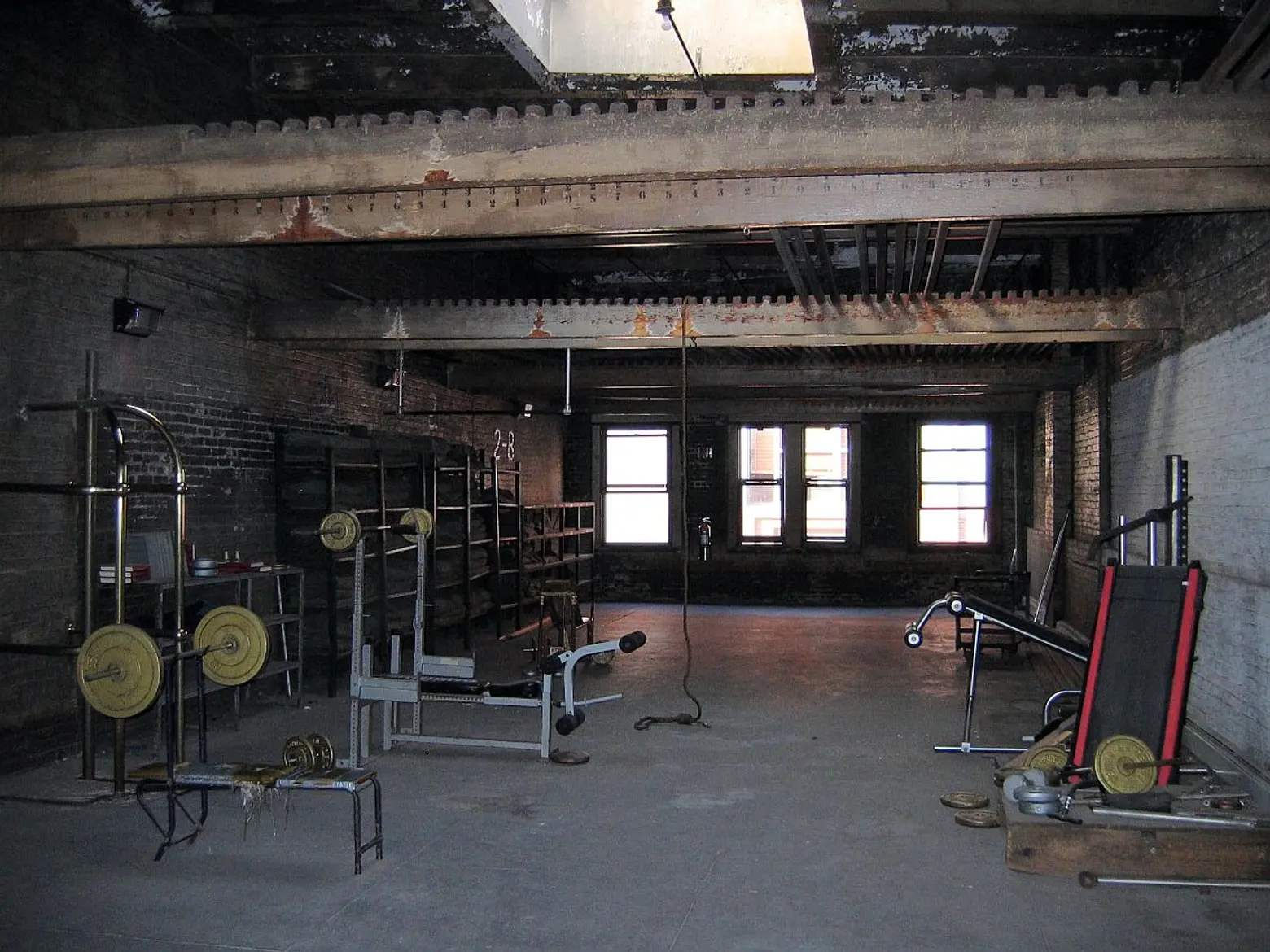
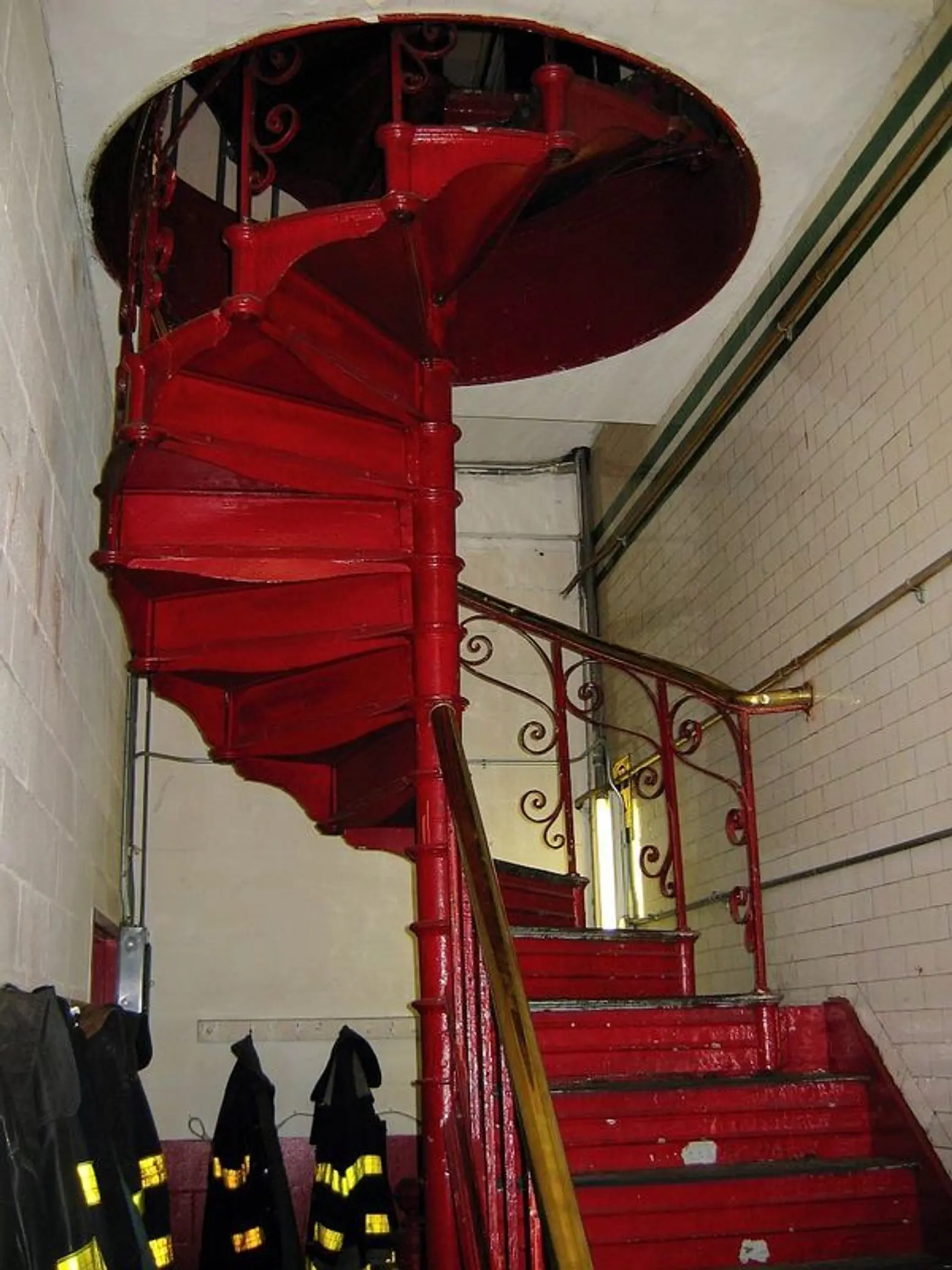 Interior images of Fire Patrol #2 pre-renovation, via Greenwich Village Society for Historic Preservation Image Archive
Interior images of Fire Patrol #2 pre-renovation, via Greenwich Village Society for Historic Preservation Image Archive
But even before the landmark designation, the building was purchased in 2010 for a reported $4.3 million by none other than Anderson Cooper, who undertook an impeccable restoration of the building’s exterior, which included maintaining the memorial plaque to fire patrolman Keith Roma on the exterior. Thanks to a promotional video for H&M that Cooper shot in 2015 in his home (alongside David Beckham and Kevin Hart), we were able to see a bit of what the 8,240-square-foot home now looks like inside, including preserved exposed brick, ceiling beams, iron railings, and even the original fire pole.
To see what the building looked like back when it was a workaday fire patrol house, check out these images at GVSHP’s Historic Image Archive >>
+++
This post comes from the Greenwich Village Society for Historic Preservation. Since 1980, GVSHP has been the community’s leading advocate for preserving the cultural and architectural heritage of Greenwich Village, the East Village, and Noho, working to prevent inappropriate development, expand landmark protection, and create programming for adults and children that promotes these neighborhoods’ unique historic features. Read more history pieces on their blog Off the Grid.
RELATED:
- New Video Takes Us Inside Anderson Cooper’s Converted Village Firehouse
- Jewish gangsters, jazz legends, and Joy Division: The evolution of the Ukrainian National Home
- Uncovering the sites of the South Village’s secret ‘Little Italy’

